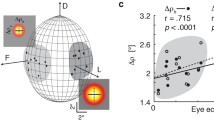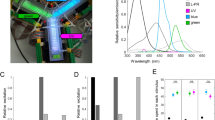Abstract.
A physiological model of dark-adapted and light-adapted photoreceptors in the honeybee worker (Apis mellifera) has been developed. Almost all of the electrophysiological components of photoreceptors known up to date, e.g. the phototransduction cascade, the ion channels of the membrane, phototransduction gain and optical adaptation mechanisms, are adequately described by simple biophysical and biochemical models. The connections of these components were tried out in synthetic simulations for best fits of simulated to intracellularly recorded membrane potentials. Although the parameters of the best model were determined exclusively for the measured membrane potentials of dark-adapted photoreceptors, the model also accurately describes the light-adapted photoreceptor membrane potentials. Furthermore, the model correctly predicts the time-courses of measured photoreceptor responses with respect to squared-modulated flicker lights up to 200 Hz. This clearly demonstrates that the presented photoreceptor model is indeed a physiologically adequate description of the essential components of the phototransduction and the electrical membrane processes in the photoreceptors of the honeybee worker.
Similar content being viewed by others
Author information
Authors and Affiliations
Additional information
Received: 5 June 1998 / Accepted in revised form: 1 July 1999
Rights and permissions
About this article
Cite this article
Becker, K., Backhaus, W. A physiological model of dark-adapted and light-adapted photoreceptors of the honeybee. Biol Cybern 82, 153–160 (2000). https://doi.org/10.1007/s004220050015
Issue Date:
DOI: https://doi.org/10.1007/s004220050015




